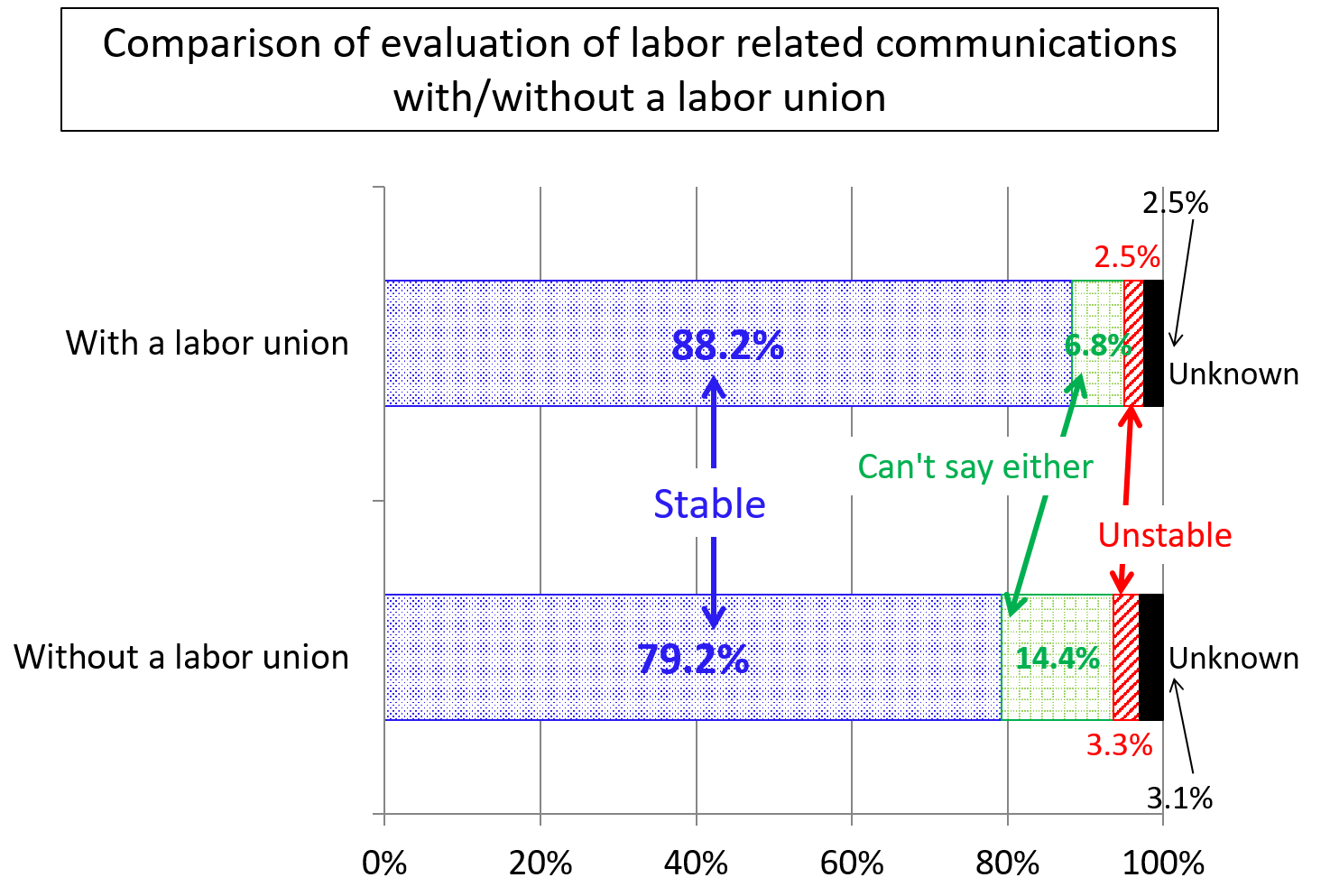Column Finance and the Social Security System 2020.08.06
【Aging, safety net and fiscal crisis in Japan】No.255: Labor unions’ existence is being questioned
In this column series, Yukihiro Matsuyama, Research Director at CIGS introduces the latest information about aging, safety net and fiscal crisis in Japan with data of international comparison.
The Ministry of Health, Labor and Welfare conducts a survey called the “Labor-management communication survey” every five years. Its purpose is to evaluate the method of communication between labor and management, as well as its effect. In June 2020, the Ministry announced the results of the 2019 survey. Among the data, the information on labor unions is notable.
As explained in Column No.213, the number of labor unions decreased from 34,232 in 1980 to 24,067 in 2019. Of the companies surveyed in 2019, only 30.2% had a labor union. Figure 1 shows the differences in the evaluation of labor-management communication between companies with and without a labor union. The percentage of employees who answered that labor-management communication was "stable" was 88.2% for companies with a labor union and 79.2% for companies without a labor union. The percentage of employees who answered “Unstable” was 2.5% and 3.3%, respectively. According to the data, it can be said that the level of communication between labor and management is not affected by the existence of a labor union.
Table 1 shows the percentage of employees in companies with a labor union who have joined their unions. The percentage of full-time employees who have joined a labor union dropped from 78.0% in 2014 to 72.5% in 2019. In addition, 13.3% of full-time employees did not join a labor union despite being eligible to do so.
Figure 1 Evaluation of relations between a company and its employees

Source: Ministry of Health, Labor, and Welfare
Table 1 Percentage of employees that joined a labor union in a company with a labor union

<#> Even in a company with a labor union, managers are not entitled to join it.
Source: Ministry of Health, Labor, and Welfare
